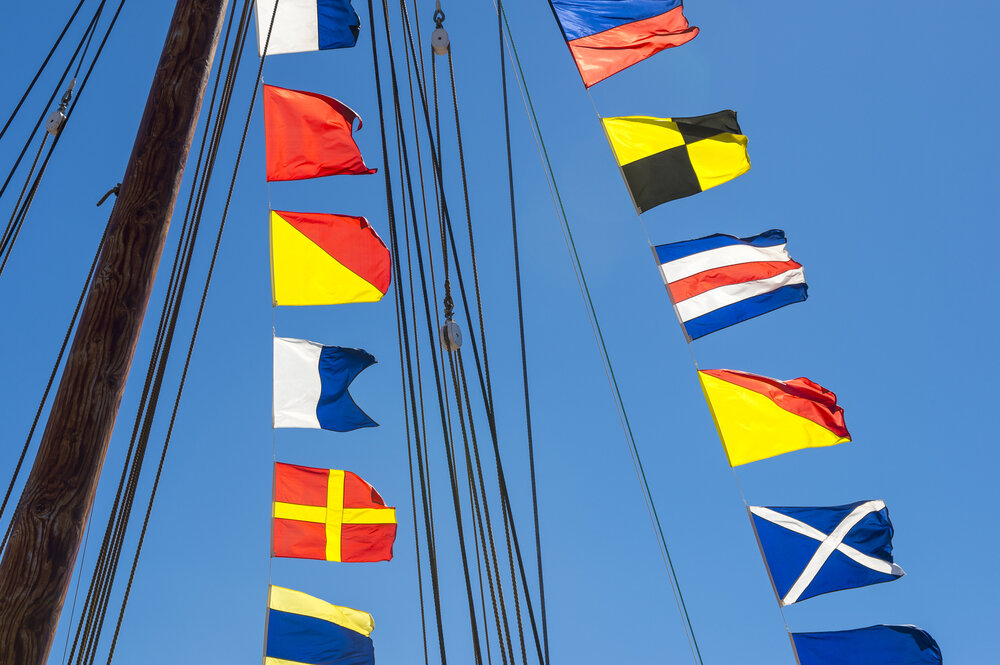As a boater, it's important to understand nautical flags and their meaning. Some flags may alert you to a weather warning, while others may help you communicate with other ships on the water.
Nautical flags are made with a sequence of 26 square flags. Each flag represents a letter of the alphabet. There are also ten numbered flags, one answering pendant, and three substitutes or repeaters.
You will only find nautical flags in a few specific colors because they are easily recognizable. These colors are:
Blue
Yellow
White
Black
Red
There are different signals and messages specific flags or combinations of nautical flags communicate. Let's look at a few of the different types of flag signals and what they mean.
Weather Warning Signals
Four signals are created from nautical flags to signal different weather warnings. All-weather warning signals are communicated with red and/or black flags.
A small craft warning is simply a single red pendant flag, while a small craft advisory (gale warning) is two red pendant flags.
A storm warning is signaled by a single square red flag with a second black square in the center. If two square red flags with black squares are present, it's meant to communicate a hurricane warning.
Signals Broken Down By Number Of Flags
The number of flags present has a meaning. Here's the breakdown
One-Flag Signals - Urgent or Common
Two-flag Signals - Distress or Maneuvering
Three-Flag Signals - Points of the Compass, Standard-Times, Verbs, Punctuation, Code and Decode Signals
Four-Flag Signals - Geographic, Names of Ships, and Bearings
Five-Flag Signals - To Relate Position and Time
Six-Flag Signals - Indicate West, East, South, or North in Longitude or Latitude Signals
Seven-Flag Signals - Longitude with more than one-hundred degrees
Nautical flags are also used in racing to communicate messages to competitors.
International Nautical Flag Meanings
Each flag representing a letter of the alphabet has a meaning. The meanings are as follows:
A or Alpha - keep clear, diver down
B or Bravo - carrying dangerous cargo
C or Charlie - yes
D or Delta - keep clear
E or Echo - altering course to starboard
F or Foxtrot - I am disabled
G or Golf - I want a pilot
H or Hotel - a pilot on board
I or India - altering course to port
J or Juliet - vessel on fire, keep clear
K or Kilo - I want to communicate with you
L or Lima - stop your vessel instantly
M or Mike - my vessel is stopped
N or November - no
O or Oscar - man overboard
P or Papa - vessel is about to sail
Q or Quebec - I request free pratique
R or Romeo - reverse course
S or Sierra - engines are going astern
T or Tango - keep clear
U or Uniform - you are heading into danger
V or Victor - require assistance
W or Whiskey - require medical assistance
X or X-ray - stop your intention
Y or Yankee - I am dragging anchor
Z or Zulu - I require a tug
Understanding the meaning of nautical flags can help you communicate and receive messages on the water.

